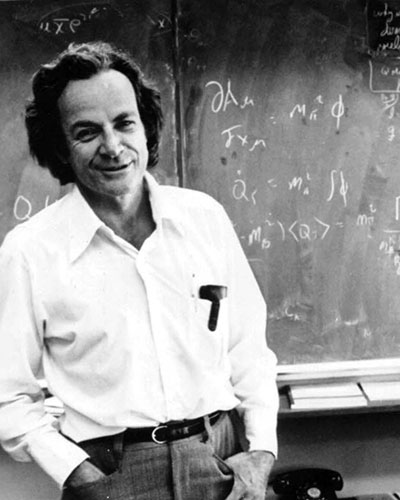Richard Feynman (1918 - 1988)

Richard Feynman was born on May 11, 1918, in Queens, New York. By age 15, he had mastered differential and integral calculus. In 1936, he attended MIT, and took every physics course offered. Later he went to Princeton for graduate studies. His interests in subatomic physics, he embarked on a lifelong quest to clarify the mathematics of a subatomic world. Feynman finished his Ph.D., and married his longtime sweetheart, Arline Greenbaum. She was already very ill with tuberculosis. In 1942, Feynman was asked to go to Los Alamos. Hans Bethe made the 24 year old Feynman a group leader in the theoretical division. Feynman worked on estimating how much uranium would be needed to achieve critical mass.
He developed many experimental devices to test his hypothesis without blowing up Los Alamos. When Oakridge ran into safety problems while separating uranium it was Feynman who devised procedures to protect the staff from radiation poisoning. Arline passed away on June 16, 1945. After the war, he followed Hans Bethe to Cornell University. It was here that Feynman developed a simple notation to describe the complex behavior of subatomic particles. This notation became known as Feynman Diagrams.
In the 1950s, he moved to Cal Tech. In 1965, he, along with Julian Schwinger and Shinichiro Tomonaga, shared the Nobel Prize in Physics for work in quantum electrodynamics. Feynman’s popular lecture series was published in "The Feynman Lectures". The personal side of Feynman was captured in "Surely You’re Joking, Mr. Feynman!" and "What Do You Care What Other People Think?" Feynman is also known for his work on the Space Shuttle Challenger accident investigation. He shocked the world by demonstrating the failure of the O-rings. Feynman died February 15, 1988 at the age of 69, from several rare forms of cancer.